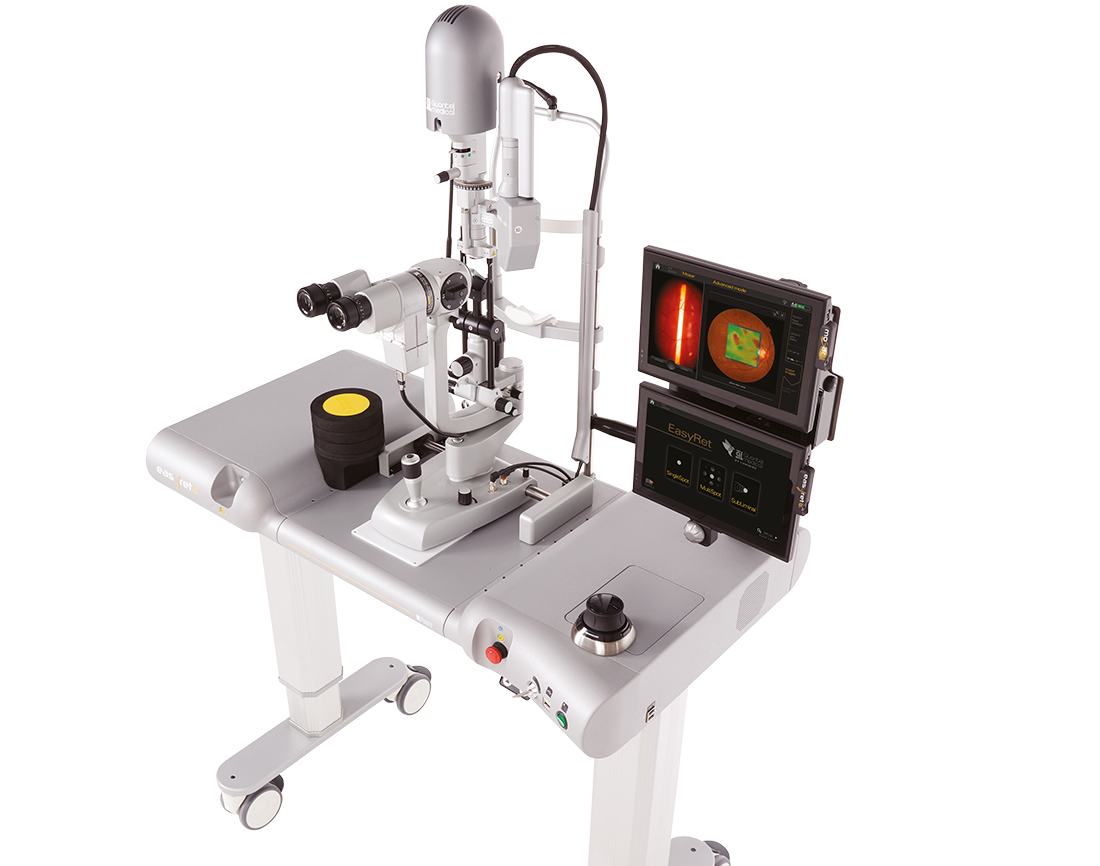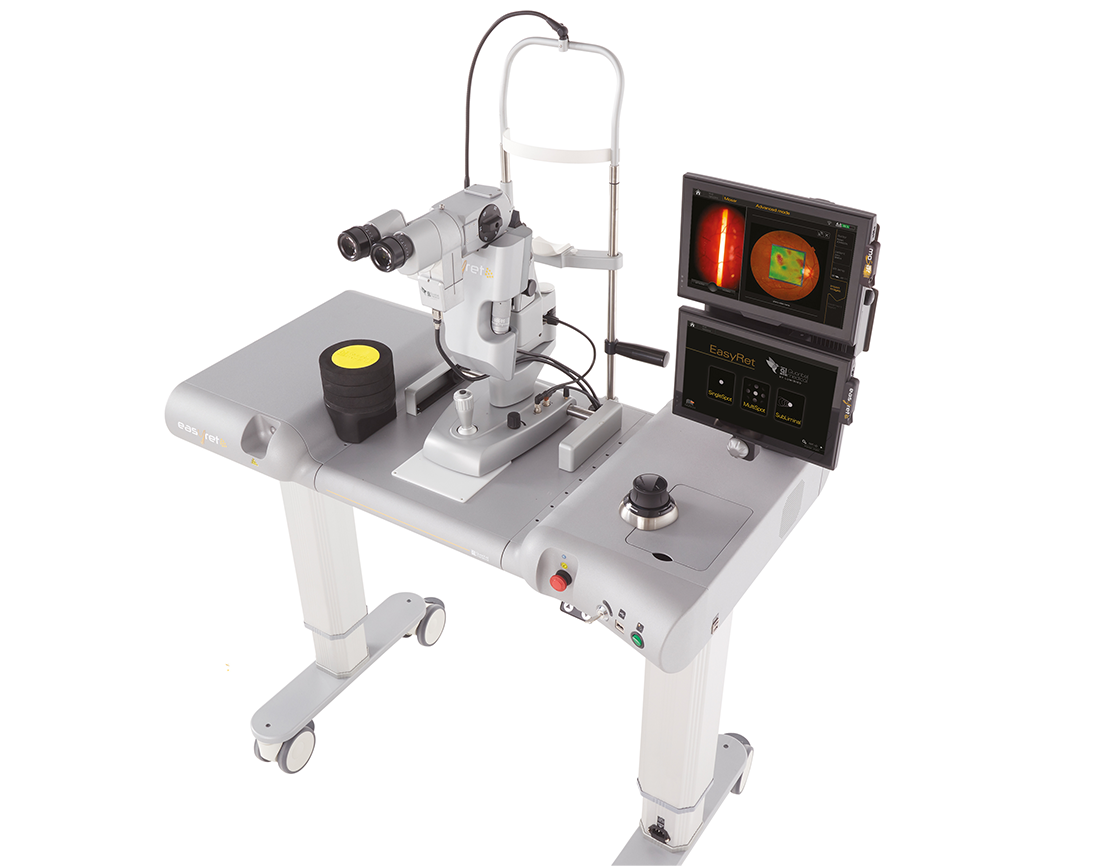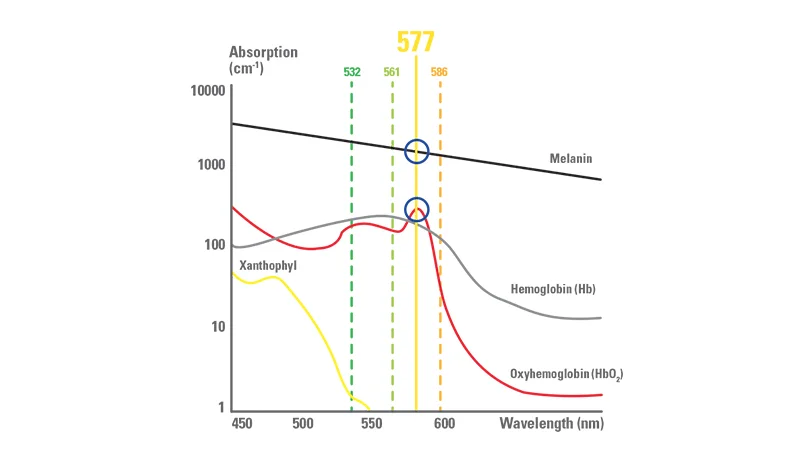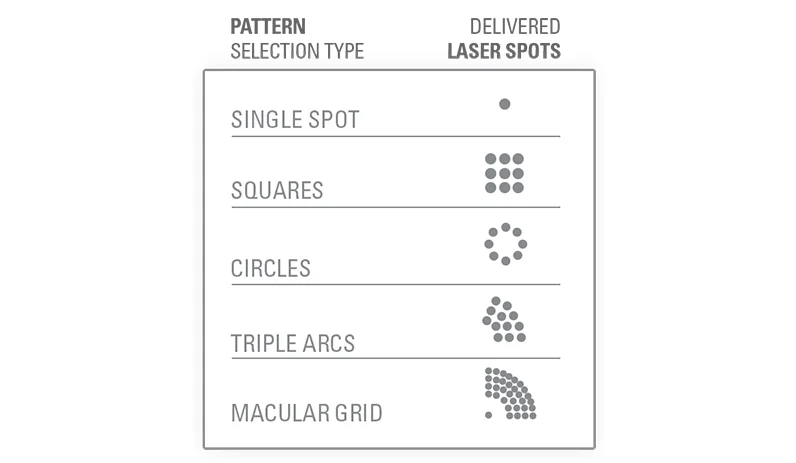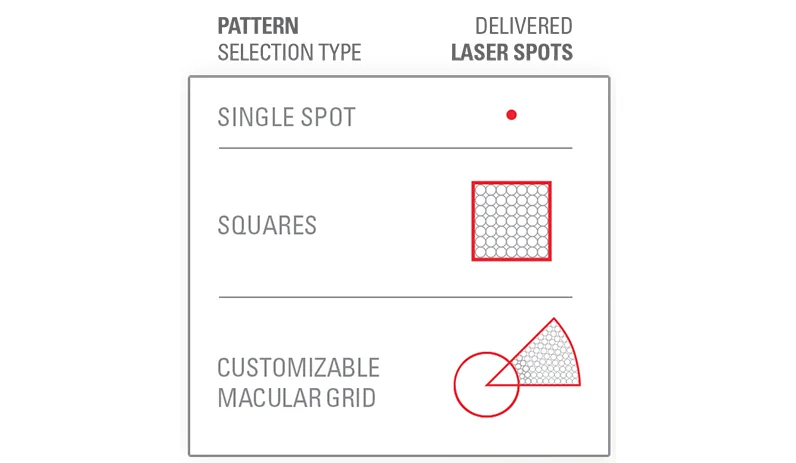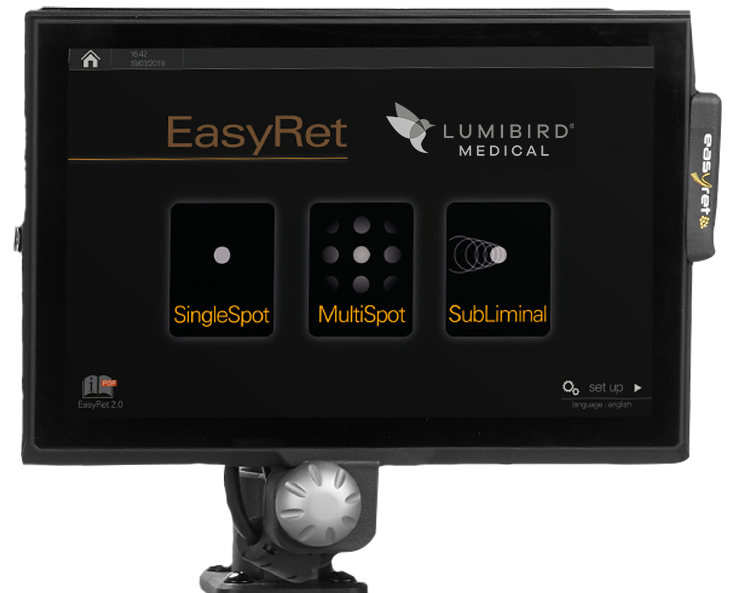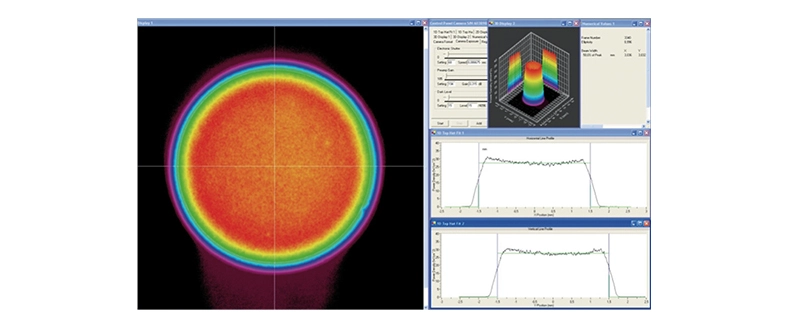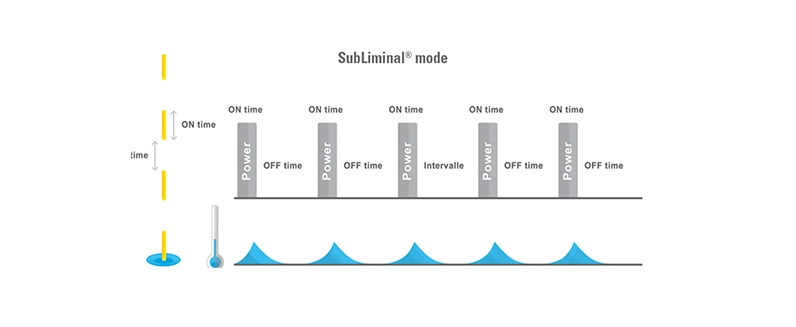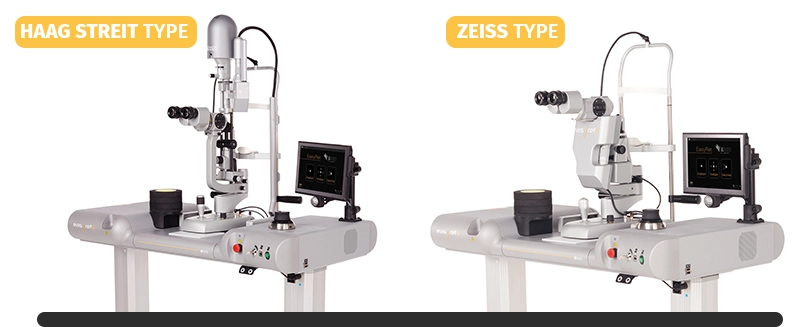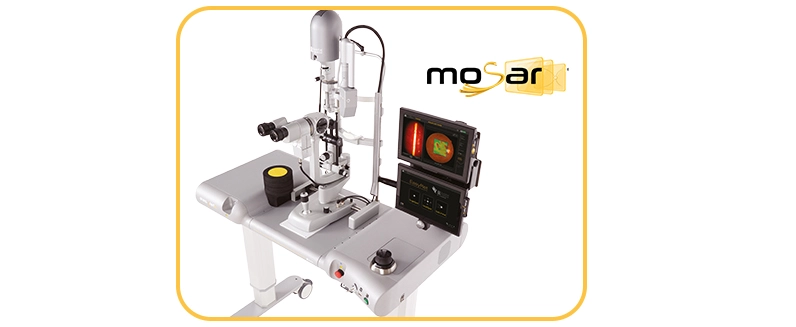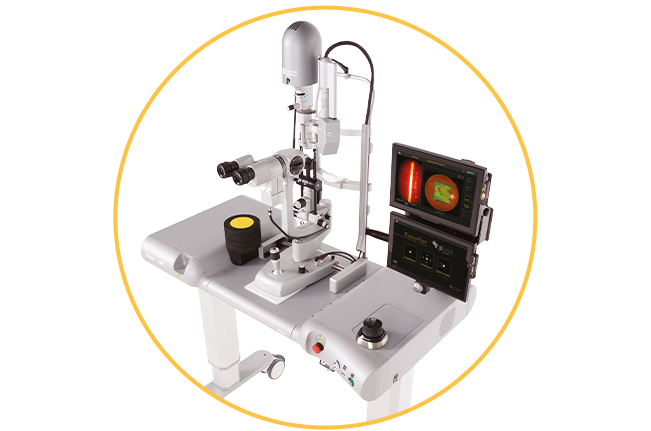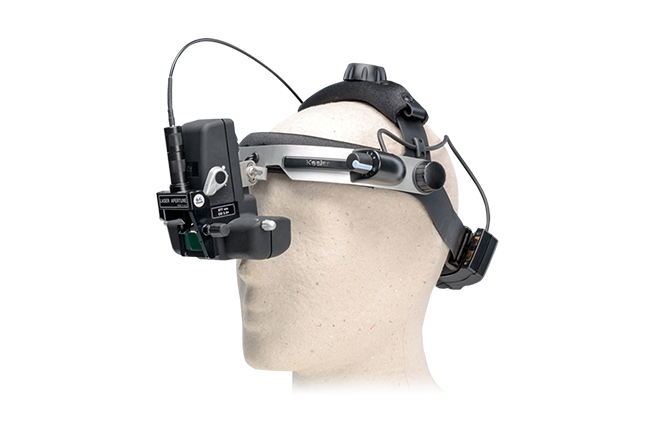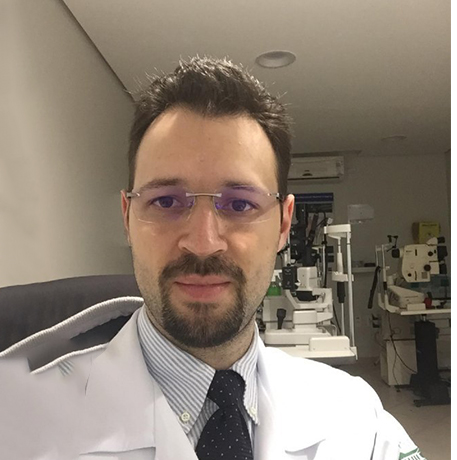
RETINAL LASER THERAPY, REINVENTED
Fully integrated 577nm yellow laser combining Lumibird Medical exclusive fiber laser technology with SingleSpot, Multispot Pattern Scanning and Subliminal® treatment modes.
Easyret® features a unique, clinically oriented user interface and software-guided treatment procedures facilitating the implementation of the laser spots and enhancing retinal treatments.
Key Features
- Most versatile wavelength with best chromophore absorption profile.
- Perfectly homogenous laser spot profile ensuring even laser treatments.
- Multispot Pattern Scanning mode for peripheral treatments is better tolerated by patients.
- SubLiminal® subthreshold mode for tissue sparing macular treatments.


